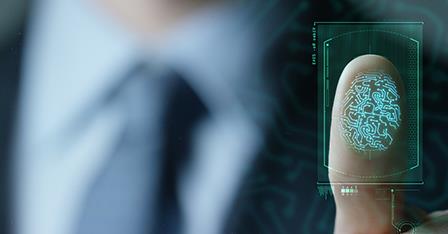Are banking biometrics about to take off?
We’ve all been there; sitting at a computer struggling to remember a password, or entering the wrong pin number at a cash point while a queue forms behind you. Thanks to the rise in biometric technology, consumers can look forward to a decreased reliance on remembering alphanumeric passwords.
Through the integration of the technology into smartphones, people around the world have been using their fingerprints to unlock their devices for years and today millions of people are familiar with biometrics and its benefits. The recent unveiling of the iPhone X and Apple’s facial recognition system moves things one step further.
These applications have shown consumers how easy it is to use their biometrics to access their personal devices. This has created a consumer who is comfortable with the technology and have it integrated into other elements of their life, like banking or at the checkout – a point reinforced when looking at a recent study, where 86 percent of consumers said they are interested in using biometrics to verify, identity or to make payments. The financial sector has begun to react to this growing level of acceptance.
MasterCard recently announced its commitment to guaranteeing that every one of its customers will have access to biometric authentication services by April 2019 – a decision made off the back of their own research with Oxford University, which found 92 percent of banking professionals wanted to introduce biometric ID, and 93 percent of consumers would prefer biometric security to passwords. As we have seen before, new technologies challenge traditional business models and transform the way organisations interact with their customers – this is no different.
Many established financial institutions and economies around the world are now getting behind biometrics. In India, NCR has been involved in a nationwide rollout of next-generation ATMs offering biometric user authentication, in addition to cash recycling and other features that could prove beneficial for banks and customers.
Bahraini Fintech firm Eazy Financial Services offers the next step in the evolution of biometrics journey of creating a seamless customer experience. The company has been working with NCR on the region’s first biometric payment network. The system will allow consumers to register their fingerprint with their bank and use this biometric data to initiate ATM or point-of-sale transactions, removing the need for a card. The combination of security and convenience this technology delivers is an attractive proposition for a customer.
Today’s digitally driven consumers want the way they shop and bank to be consistent across every channel, including how they identify themselves when making a payment. As biometric identification increasingly becomes standard across smartphone devices, the combination of these two technologies is starting to win the battle for hearts and minds when it comes to simplicity, convenience and seamlessness across all channels.
However, there are still some hurdles to overcome as far as biometric technology is concerned, particularly when it comes to customer acceptance and security. One of the biggest causes of failure for technology is low adoption, and even though the figures show that consumers want to see more of the concept, the solution must be simple, logical and easy to use it if it’s to be adopted.
Like any burgeoning technology, biometric authentication still has its fair share of challenges to meet and questions to answer. But these obstacles are quickly being overcome, partly through the work of mobile phone manufacturers, which is paving the way for biometrics to become a vital component of the 21st-century payments landscape.























